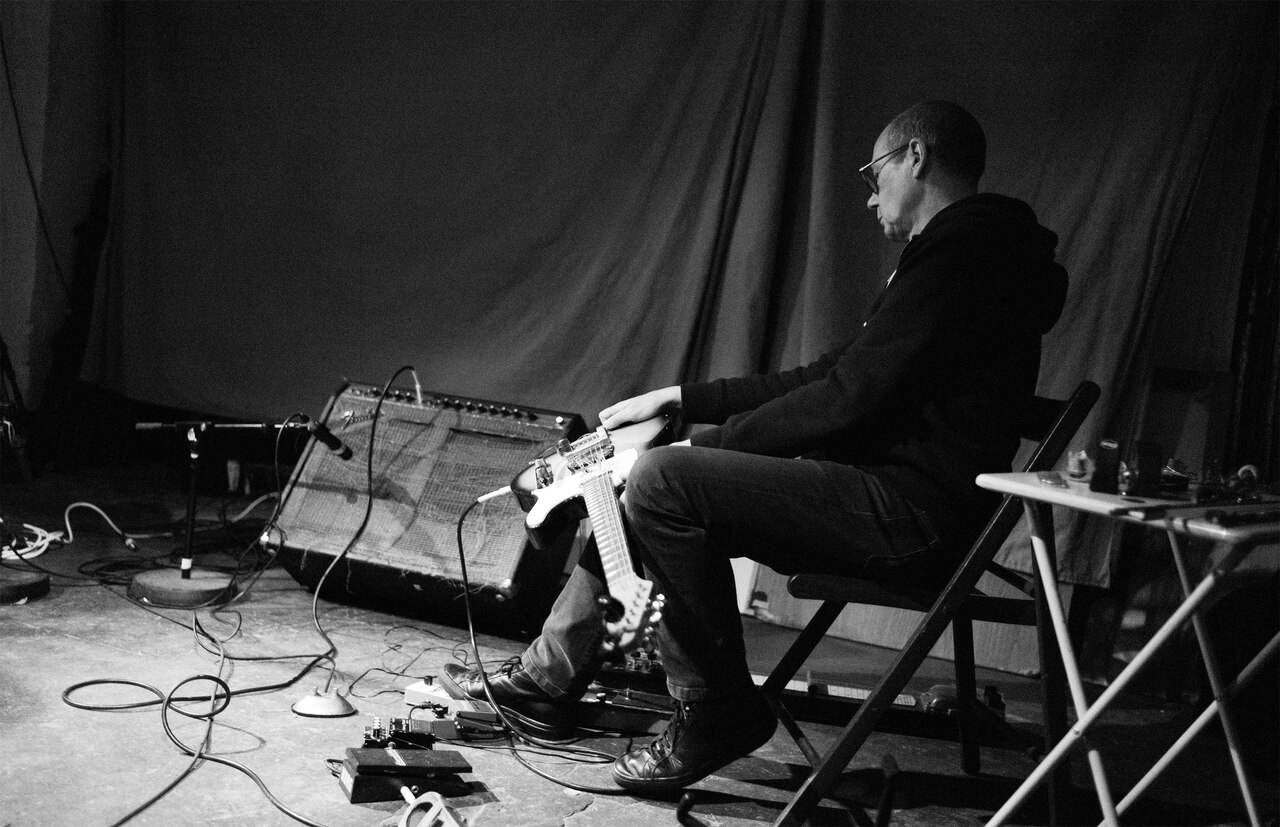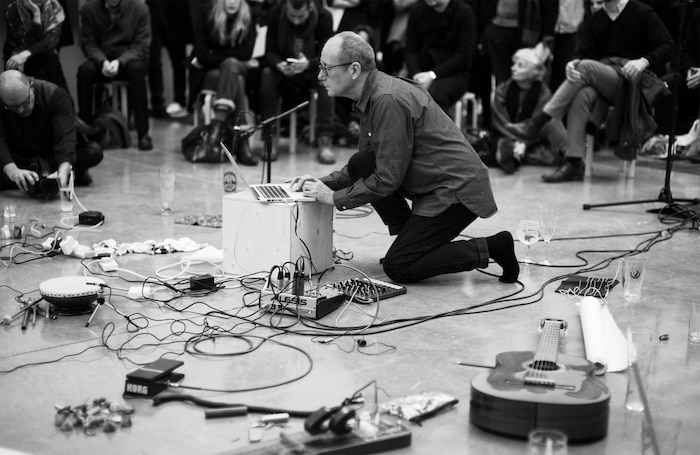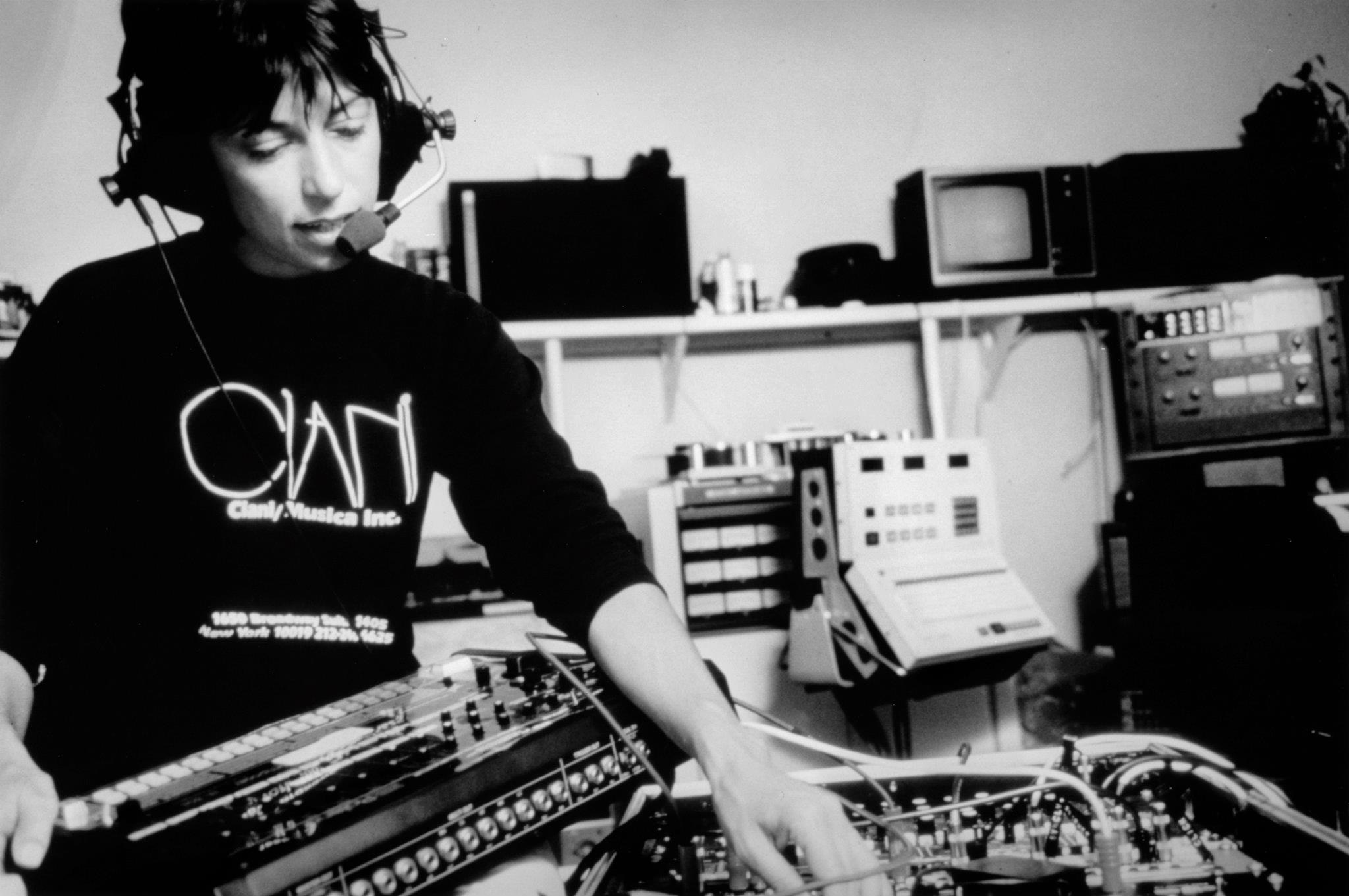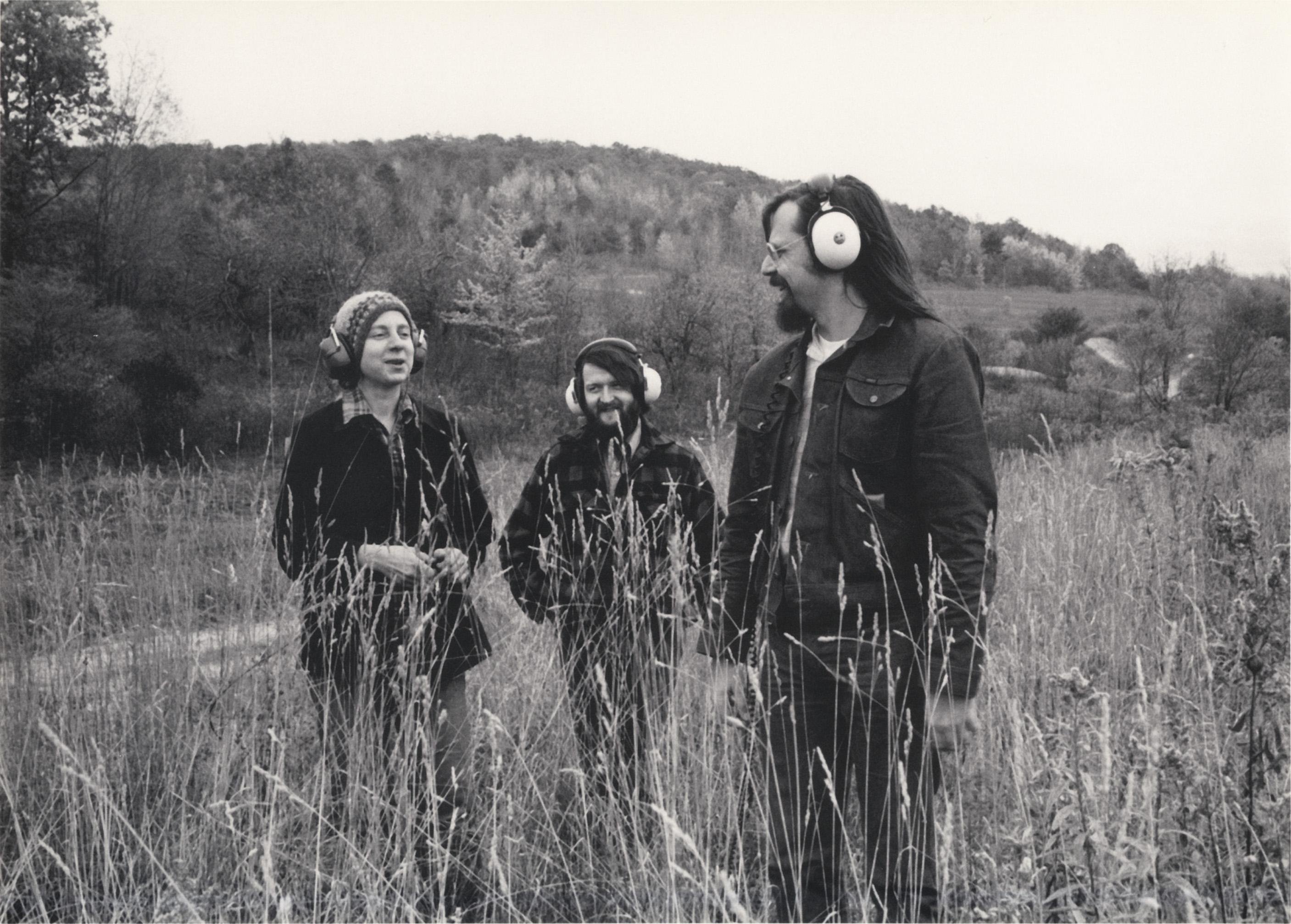David Toop Is Still Seeking Out New Sounds
Ian Maleney talks with a musician and writer who has spent a lifetime questioning the status quo

During his life-long engagement with music, David Toop has taken a shot at just about everything. He started out wanting to be a rock star, a guitarslinger influenced by the rock & roll of the ’50s and the heavier, freer sounds emerging in the ’60s. He went some way towards achieving that dream, appearing on Top of the Pops in 1980, playing guitar with playful new-wave group The Flying Lizards. Somewhere along the way, however, Toop fell in love with the free improvised music emerging from London and he began making hauntingly beautiful music on Brian Eno’s Obscure Records, alongside Max Eastley, as well as releasing various recordings and collaborations on his own Quartz Editions label.
And he wrote. The publication of Rap Attack in 1984, one of the first books to seriously examine the then-emergent musical style known as hip-hop, helped transform his career yet again. His work appeared regularly in magazines like The Face and The Wire, often at the expense of making music. His next book, Ocean of Sound, published in 1995, explored the world of ambient music and traced its roots back through the 20th century to Debussy and forwards through the networked connections of modern, globalized life.
His immersion in these ideas seemed to trigger a resurgent musical spark: after an eight year hiatus, he released 12 albums in the following decade, culminating in the incredible Black Chamber in 2003. This was a different kind of music to the improvised cassettes and DIY LPs of his earlier days; it was layered, digitally constructed, concerned utterly with texture and space, pulling from every corner of the musical field, constantly folding over itself, deepening.
Toop has spent the last 15 years working in academia, and is now professor of audio culture and improvisation at London College of Communications. He’s written eight books to date, composed an opera and curated multiple art exhibitions. He regularly performs musical experiments – often halfway between music and mime. The night before we speak, Toop performed to an audience of post-graduate students in a disused local community center. The idea, he says, was “to give them something to think about.”
“The theme was ‘unfinished,’ and how objects turn into instruments and how actions turn into performance and the relationship between audience and performer,” he says over Skype from his London home. “So I did a performance where I just kind of unpacked in front of them until the point where they realized that something was happening and then I did something that was pretty silent actually, just, you know, actions, and then I packed up. They were wondering when it was finished. It was just trying to unlock them from some of the routines they get into. They can get very focused on excellence, without questioning the basis of what they’re doing.”
Listening to him describe this performance, it seems to echo his description of a pivotal moment in his own musical education – seeing the free improv group AMM for the first time, at the Roundhouse in London in 1967. “Loud bursts of noises are emitted, none of them having any perceivable relationship to other sounds,” he wrote of that performance in Ocean of Sound. “Standing at the edge of the stage, looking around me, I can see that nobody else in the audience realizes that this is a performance.”
It was, he says, a vital shock to his youthful expectations of what music could be, and its formlessness represents an ongoing challenge. “That was what got me really excited about seeing AMM the first time in 1967,” he says. “I thought, it’s just people doing things. It hadn’t that shape of music, of the structure that you’re used to.”
The last year has been a very productive time for Toop, with the publication of the first volume of Into the Maelstrom, a history of improvised music which has been many years in the making, as well as the appearance of his first studio album in a decade, Entities Inertias Faint Beings. The album is a particular surprise given Toop’s recent focus in live performance on formlessness, smallness and the unrepeatable – to make an album of this kind of stuff, or perhaps more accurately, to release one, when the attention economy operates at such a frantic pitch, might seem a touch pointless. Who would take the time to listen?
Toop says he had talked himself out of making an album for “all sorts of pragmatic reasons,” but what he was really worried about was the consequences of committing to it: the months of work, the mental toll, the glaring possibility of failure – and all that before it even reaches an audience. Even after four decades of making and releasing music, he still finds himself unnerved by it, not sure if he’s up to the task. It took a little bit of pushing from Lawrence English, the Australian musician and old friend who released the album on his label Room40, to make it happen.
“I’d sort of given up hope of making a new album, almost,” he says. “Suddenly, it made sense to me. I realized it was all there waiting for me to make it happen. You find it in yourself. In a way, I think that kind of keeps you alive. I’m at an age now where a lot of people are kind of retired, they’ve put their feet up. But I think if you can continue to push yourself, really you could go on in this same way until you drop. That’s my hope anyway. That’s what Lawrence English said to me. He said, when you die, you’ll have loads of projects unfinished. It was such a funny thing to say, I just laughed. It was so kind of brutal but absolutely true, I hope.”
Made mostly during a holiday in Cornwall and consisting of layered, fragmentary recordings which he’d built up over a long period of time, Entities Inertias Faint Beings retains much of the immediacy of Toop’s live performances. There is a beautiful sense of space, or rather of perspective, and of dynamic range. Nothing stays still for long, whether tuned percussion, burbling noise or melancholy guitar harmonic. Throughout, there is a sense of something emerging, but whatever it is never shows its full face. It’s always hidden in the shadows. The imagination completes the picture.
We see making sound as active and out-going and listening to sound as passive and in-coming. I’m trying to reverse that.
Toop is the first to admit that there is not always a clear and apparent relationship between the music he makes and the books he writes. It’s easy enough to see the influence of musical form on a book like Ocean of Sound which he describes as a series of different length, semi-self-contained sections, sometimes very short, with an over-arching narrative. By breaking things apart into smaller pieces and placing diverse ideas and references next to one another, the book’s form expressed the concerns of its musical subjects: attention, silence, networks, globalization.
Entities Inertias Faint Beings flips the relationship around. Taking influence from literary forms and building upon the ideas about listening explored in his book Sinister Resonance, sound here is something which slips the bounds of control. It becomes a presence which we can never totally explain, but which we can follow as it moves. We can place ourselves and others in the world through sound, and come to understand our environment in a different way. Listening here is just as active and important as voicing, as sounding.
“We see making sound as active and out-going and listening to sound as passive and in-coming. I’m trying to reverse that,” explains Toop. “The reversal is based on reading certain, particularly women writers, and Joyce to some extent obviously, particularly in Ulysses and Finnegan’s Wake, but also writers like Clarice Lispector and Dorothy Richardson, Virginia Woolf and even Jane Austen – I’m reading quite a lot about Jane Austen at the moment. So you go back to this proto-modernism from a woman’s perspective, and you get completely different ideas about silence, completely different ideas about sounding and listening.”
I like the idea of working with insignificance. I like the idea of working with things that are underwhelming. You could say I like to be the opposite of a TED Talk.
It’s worth focusing on Lispector to make these ideas a little clearer. The beautiful loping rhythm of the opening track’s title “Dry Keys Echo in the Dark and Humid Early Hours” comes from her 1973 book, Agua Viva. This experimental work is devoid of characters or plot but the intensity of the writing, its repeated attempts to dig into something within or below the noise of everyday experience, is more than enough to sustain it. The approach, a burrowing into the senses and the dream logic of the inner voice, the inwardness, the insignificance, is central to Toop’s recent work.
“You get these short little sections which are absolutely beautiful and very penetrating but they’re extremely brief,” he says of Agua Viva. “They’re somehow self-contained and yet very much part of the whole. That smallness is something I try to bring into performance. We live in a time where there’s a lot of emphasis on blowing people away. It’s possible to use media and spectacle to really flatten people and, although I don’t mind a bit of that, it’s a pretty dangerous trend. If you’re using media and spectacle to flatten people in entertainment, then you can do exactly the same thing in politics. I think we see a lot of this now. What’s being said is just not important any more. It’s just, yeah, let’s have a huge rally and everybody kind of goes along with the program whether they agree with the sentiment or not. And we’ve been there before, historically. We know what it leads to. So I like the idea of working with insignificance. I like the idea of working with things that are underwhelming. I like to be unprepared. You could say I like to be the opposite of a TED Talk.”

This rejection of spectacle is about more than just a desire for more “authentic” experiences. It’s an understanding of the tightly wound connections between the global, political environment and what Kate Bush once called The Sensual World. Toop questions the fundamentals of communication, asking what kind of speaking connects and opens out into a conversation, and what kind remains a stubborn, domineering monologue? To question, as he says, the basis of what we’re doing. Though many artists and thinkers have asked these kinds of questions during the last century, they seem more relevant than ever.
“I listen to a lot of music and I think, OK, I can see why it’s good,” he says. “I can appreciate it, but it really does nothing for me any more. Or nothing very much. That’s something to do with living your life dismantling conventions, or trying to dismantle conventions. Listening to music which is not well-tempered, listening to music which is by Western standards out of tune or out of time, listening to music which has radically different forms, or apparently no form. And as you get to a certain age, you’re not so affected by music that does exist within those strict parameters. Then you feel the whole situation with the audience and performer has to change. That was very much a 20th century kind of thought, and then it went backwards for a while. Now we have to think about it again.”
The most recent edition of Wysing Polyphonic, a small, one-day music festival in Cambridgeshire, presented a rare opportunity to do just that. The festival, curated by Donna Lynas, the director of Wysing Arts Centre, was held without any amplification whatsoever, forcing the musicians and the audience to radically alter their approach and their expectations.
So many different things that are accepted, just taken as norms. I think we have to re-examine all of this stuff.
“It was really interesting, the effect on people and the effect on groups,” Toop says. “How it intensified everybody’s listening, which is what you would expect, but it also created these kind of strange rituals. I stood there in a performance by two friends of mine, Rie Nakajima and Keiko Yamamoto, and they were hardly doing anything. Some small sounds and some voice sounds, and you felt like you were in some tiny, new, emergent community. And a lot of that feeling came from a lack of amplification. People in the audience are thinking, is there anything there? What do I do? Am I bored? Is there nothing happening? Should I get closer? I can’t move because it’s quiet... So many different things that are accepted, just taken as norms. I think we have to re-examine all of this stuff.”
Time and time again, Toop’s books have attempted to circumvent the received wisdom on styles of music, the accepted understanding of certain experiences. “It’s not just about a linear history,” he says. “It’s about the very convoluted way in which something grows. How contributions can come from figures and movements which are seen as peripheral, marginal, unimportant.”
The re-release last year of Toop’s recordings of Yanomami tribespeople, made in 1978 in southern Venezuela, allowed him to focus again on one of his most important experiences of “peripheral, marginal, unimportant” music. In the years since the original recordings were made, much of the traditional Yanomami life has been destroyed by the logging industry and the demands of integration into contemporary society. These recordings of Yanomami shamans, of rituals and songs, of conversation, are some of the best records we now have of a vanished way of life.
The form of that event [by the Yanomami], those events, whether you call them music or not, were hugely important to me.
“A huge amount of music died out in the 20th century,” he says. “It was eliminated, one way or another. Either by a mission influence or the effects of modernity or by environmental change, people being driven off land or wiped out or whatever. And nobody much cares about that. Maybe they care about what’s happened to culture loss and its catastrophic effects but in terms of the music disappearing, nobody much cares about it because not many people know about it or listen to it. Although I think it’s subject to criticism, this idea of going and recording a people’s music or ceremonies and then coming back and selling it, I also think it’s important that that has been done because we have recordings that you can listen to which show you that life can be structured in a different way, because it’s my belief that music reflects different social structures, different belief systems.”
On a personal level, going to the Amazon and recording these ceremonies was life-changing. Making the journey had been something Toop had dreamed about since childhood, and even though there was basically no recognition for what he was doing at the time, the experience profoundly altered how he worked and how he lived his life. The much-expanded re-release, which came with a 40-page essay by Toop as well as a previously unseen set of photographs by Odile Laperche, allowed him to present the record of that experience in the way he’d always wanted, and to convey the importance of what had been caught on tape.
“I was 29 years old, I was completely broke, I had no money at all,” he says of that time. “The nature of the recordings was so extreme in some cases that it really reconfigured my ideas about music and the significance of music as a social act and as an expression of the biggest beliefs of a society, the cosmology of a society. The form of that event, those events, whether you call them music or not, were hugely important to me. Influential, if you like, on the way that I create music. Not in the sense of copying sounds or producing some kind of exotic Hollywood bastardization of what I was hearing, or pretending I was a Yanomami, taking drugs and having hallucinations and saying I was a shaman, none of that. Just the structure of events was really an amazingly impressive thing to me. Also, its fragmentation. It had no wholeness, what we call wholeness. So that took me back to the AMM experience in 1966, and it takes me forward to the performance I did last night. So it was hugely important to me to put those recordings out, to get the photographs, to write a proper text.”
Now 67, Toop appears to be feeling as energized as ever, with one piece of work always leading onto another, ideas spiraling outward from an oscillating center. At the heart of it all, a commitment to sound, to listening, to the power of art and song to embody the most personal desires alongside the greatest social beliefs. For Toop, sound is a carrier, and listening carefully can take us to so many fascinating places; new and old, near and far, intensely private and utterly public. Pushing through the difficulties of new forms of working and writing, trying to live with the contradictions of quiet and loud, of noise and silence, of sounding and listening, of word and voice, these experiences have made his work richer and, even as it’s got quieter, more profound. Such irresolvable paradoxes come up regularly in Toop’s line of work, but he has little interest in collapsing them. He works within the fractures of those contradictions, aiming to see and live with both sides at once.

